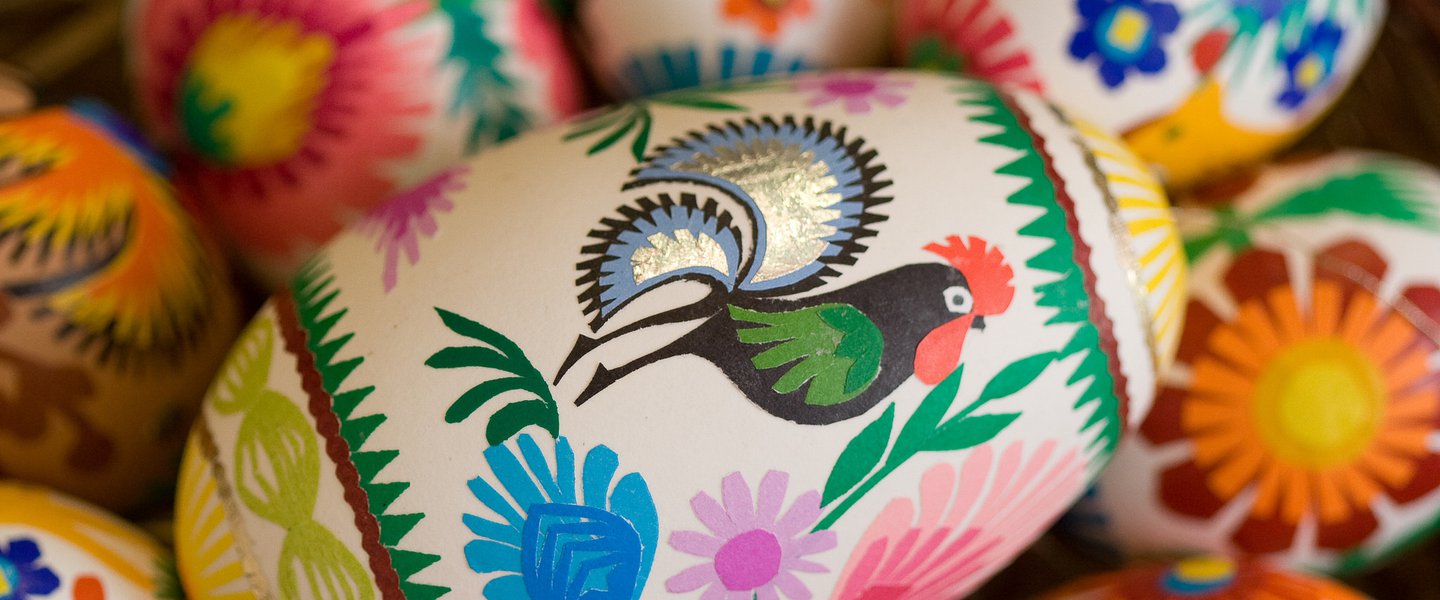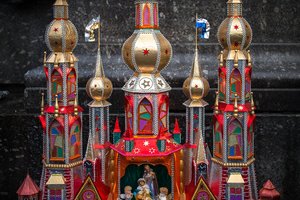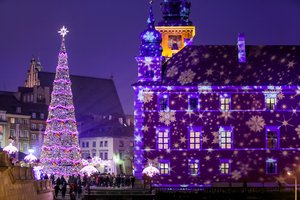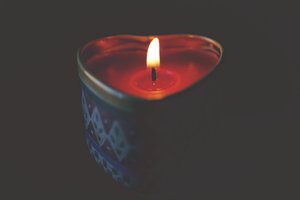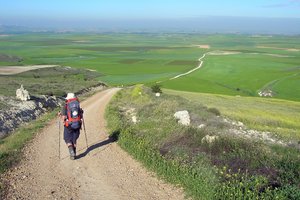Easter
It is the oldest and the most important Christian feast in Poland, celebrating the resurrection of Jesus Christ. It is a movable feast. It is celebrated on the first Sunday after the first full moon in spring (from 21 March to 25 April).
The week preceding Easter, during which the Church commemorates the most important events for Christianity, is called the Holy Week. Its most important part is the Paschal Triduum (starting with the Mass of the Lord’s Supper on Maundy Thursday and ending with the Easter Vigil on the evening of Holy Saturday). On Sunday at dawn, Sunrise Service is held – a solemn mass with a procession, during which worshipers rejoice over the Resurrection of the Lord.
Easter in Poland is very colourful, accompanied with joy and numerous religious and folk customs.
Palm Sunday

Palm Sunday is the last Sunday before Easter and the first day of the Holy Week, which commemorates Jesus' entry to Jerusalem. In churches, participants bless palms made of willow birches, branches of box trees, raspberries and currants adorned with flowers, moss, herbs and colourful feathers. Household members are symbolically whipped with the palm, which is meant to bring them good luck for the following year. Palms stuck behind paintings or placed in vases protect the house against calamities or neighbours' malice. In many In line with an old Polish tradition, competitions for the biggest and the most beautiful palm are organised across the country. One of the best known contests of this type is the one held in Łyse, Kurpie. The biggest palms are over 10 metres long.
Easter eggs
The eggs, which dominate the Easter table, symbolise life and rebirth. Beautifully decorated, they have adorned Polish tables at Easter for centuries. Although the methods of colouring and decorating eggs have evolved, the tradition has stood the test of time. Traditional patterns on Easter eggs are prepared with hot wax applied to the shell. Eggs are then covered with paint, and finally the wax is removed to reveal the patterns that have been created. The most common symbols on Easter eggs include lambs, crosses, flowers and other spring motifs.
Blessing of the Easter baskets
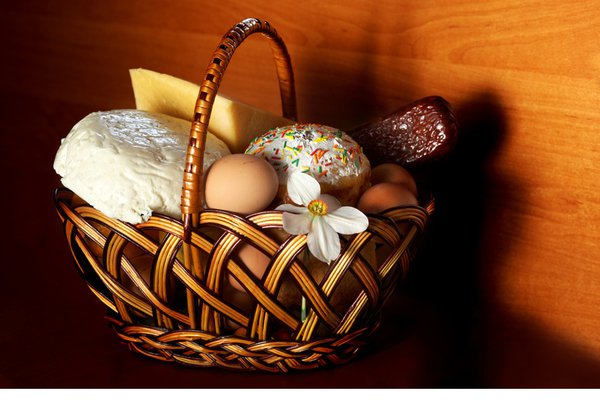
Holy Saturday is the day of joyful anticipation. On this day, decorative baskets with food are prepared to be blessed at church. They include eggs symbolising birth and new life, a lamb made out of sugar symbolising the sacrifice of Christ, as well as bread, salt, cold meat, horseradish and a traditional cake. Blessed food is eaten on the next day, on Sunday, after the Sunrise Service, during the Easter breakfast.
Easter breakfast
On Easter Sunday after the Sunrise Service, families sit down and eat together. Tables are covered with a white cloth and are decorated with Easter eggs, fluffy chicks, and catkin or fresh flowers, which create a spring atmosphere. The basket with blessed food is placed in the centre. Easter breakfast begins with sharing blessed eggs, a tradition with similar symbolic significance to the sharing of the Christmas wafer. On this solemn morning, the food that was blessed on the previous day is eaten first. Then follow the traditional sour rye soup, meat, cold cuts, pâté, stuffed eggs, and for dessert: babka (sweet yeast cake), cheesecake and mazurek (pastry with a generous layer of chocolate or dulce de leche icing decorated with dried fruit and nuts). Children love being given chocolate bunnies, chicks and lambs.
Easter Monday
Śmigus–Dyngus – Wet Monday is celebrated on the second day of Easter. On this day, people splash others with water: both relatives and strangers. The tradition derives from old pagan customs related to the symbolic awakening of nature and spring cleansing of dirt and illnesses. Girls that were soaked on this day increased their chances of getting married.
In many villages in southern Poland, the tradition of sprinkling fields with holy water on Easter Monday is still very much alive. It is often accompanied by tricks played on neighbours, such as changing gates, placing farming tools on roofs or hiding water buckets.
Easter games
People in Poland have played ‘cracking eggs’ for centuries. Two people strike Easter eggs held in their palms against each other. The holder of the stronger, uncracked egg is the winner.
More about regional Easter traditions in Poland
03.04.2015
